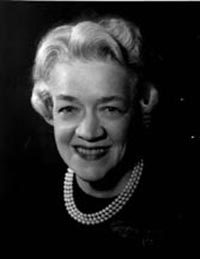 |
© Bonnie Schupp, Photographer Fells Point, Baltimore, Maryland |
U.S. Government Poisons Citizens
It was in the mid-1920’s during Prohibition. The government was frustrated because people were breaking the law and, in fact, drinking more than ever. Prohibition wasn’t working. The illegal alcohol trade was thriving and growing. This story and more is told in Deborah Blum’s fascinating book: Poisoner’s Handbook, murder and the birth of forensic medicine in jazz age New York.
To discourage this alarming trend, in 1906 the U.S. government began requiring alcohol manufacturers to denature industrial alcohol. The easiest way to do this was to add extra methyl, or wood, alcohol into the mixture which made it more lethal. In response, bootlegger chemists found a way to filter out much of the methyl alcohol. The spirits were still more poisonous than traditional grain alcohol but not as much as it might have been.
Congress then took tougher measures so that alcohol would be so deadly that chemists would be unable to do anything with it. On December 28, 1926, Dr. Charles Norris, chief medical examiner in New York City, stated publically:
“The government knows it is not stopping drinking by putting poison in alcohol. It knows what the bootleggers are doing with it and yet it continues its poisoning processes, heedless of the fact that people determined to drink are daily absorbing that poison. Knowing this to be true, the United States Government must be charged with the moral responsibility for the deaths that poisoned liquor causes, although it cannot be held legally responsible.”
Not victims but law-breakers
Wayne Wheeler, general counsel of the Anti-Saloon League of America, responded that these “so-called victims” had broken the law and deserved no sympathy for their behavior. The next day, the Treasury Department announced the new requirement that denatured alcohol be even more poisonous. Methyl alcohol amounts would be at least doubled.
Chemists and pathologists in New York City’s medical examiner’s office were outraged that their government would adopt a policy known to kill large numbers of people. And most of the victims were the poor. The wealthy could afford higher-quality alcohol and often partied with their bootleggers. But the poor could only afford cheaper stuff and straight wood alcohol.
Staggering statistics
The statistics for 1926 are rather staggering: 1200 in New York City had been sickened or blinded or both because they had imbibed some form of industrial alcohol. In addition, 400 had died, most from New York’s lower east side. Who knew how many others were suffering from the effects of poison on their nervous systems.
When comparisons were made between the before- and after-Prohibition statistics, it was obvious things weren’t working:
Before Prohibition, at Bellevue Hospital alone, each year there were about a dozen cases of moonshine and wood alcohol poisoning with about a quarter of them being fatal. During Prohibition, during a single year in 1926, the same hospital treated 716 people for alcoholic hallucinations, blindness and paralysis because of poisoned alcohol. Some 61 of these had died.
Charles Norris’s office analyzed bottles from several sources. Every drink contained methyl alcohol but they also found gasoline, benzene, cadmium, iodine, zinc, mercury salts, nicotine, ether, formaldehyde, chloroform, camphor, carbolic acid, quinine and acetone!
Norris said, “My opinion, based on actual experience of the medical examiner’s staff and myself, is that there is actually no Prohibition. All the people who drank before Prohibition are drinking now—provided they are still alive.”
Journalists criticize government
Columnist Heywood Broun wrote in the New York World, “The Eighteenth is the only amendment which carries the death penalty.” The Evening World claimed the federal government to be a mass poisoner and added that no administration had been more successful in “undermining the health of its own people.”
The Chicago Tribune wrote, “Normally, no American government would engage in such business. It would not and does not set a trap gun loaded with nails to catch a counterfeiter. It would not put ‘Rough on Rats’ [a rat poisoning used at that time] on a cheese sandwich even to catch a mail robber. It would not poison postage stamps to get a citizen known to be misusing the mails. It is only in the curious fanaticism of Prohibition that any means, however barbarous, are considered justified.”
Writer Deborah Blum has done a good job of presenting facts in a most readable way. We learn about poisoners who caused grueling deaths for their victims but who got off because forensic science was just beginning and not yet trusted. And we learn about our own government’s role in the death of its citizens. I am only halfway through this book but am sure there will be much more of interest in the next chapters.
What if?
Consider the anti-smoking campaign. Suppose our government were to mandate that nicotine be increased in all cigarettes sold? Nicotine seems to help calm some people and might be purported to help people lose weight but it is also addictive and long-time cigarette smoking is responsible for some diseases. If Congress were to pass a law saying that more “poison” had to be in each cigarette, would this result in less smoking? Probably not. It didn’t work with the Prohibition.
On the other hand, think about what might result if pot were de-criminalized. But that’s a topic for another blog. Here's more information on marijuana law reform efforts here.













